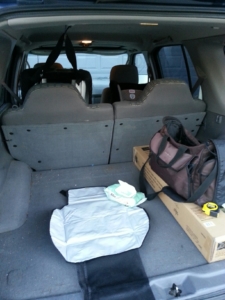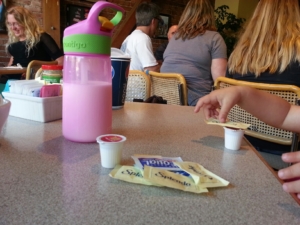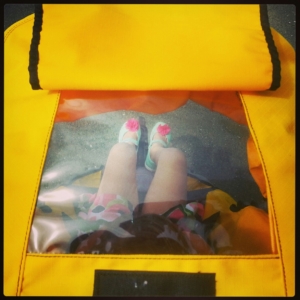The Most Important Skill for Family Road Trips
Family road trips require Mom and Dad to multi-task like nothing else. We must entertain the kids! While driving! And listening to Demi Lovato! While keeping ourselves awake!
Many of us parents must master another skill, too: The art of changing diapers in the car.
For me, this last skill is the ultimate challenge—the Everest of road trip rigors. I don’t do well changing nappies on slanted surfaces (read: front seats), and I’m too much of a perfectionist for the quick change (let’s just say I’ve got an OCD about lining up those diaper tabs so there’s no overlap whatsoever).
To say I’ve grappled with this issue would be an understatement. On any given road trip, I probably spend at least 300 miles of every 500-mile day strategizing about how to change the next diaper. (Seriously.)
That means I’ve experimented with literally dozens of tactics in the last four years. And so, in no particular order, I present to you my top three most successful strategies for mastering this skill.
Use the hood.
Most trucks, including mine (a 2001 Nissan XTerra) have relatively flat hoods, providing a changing table-like surface on which to operate. When employing this method, I treat the hood like the floor of an airplane galley, and lay a blanket beneath the changing pad to make sure no part of the baby touches the dirty steel.
NOTE: I also only utilize the hood after the car has been parked for a while, as that front panel can get pretty hot after drives of long distances.
Fold the seats.
Many minivans (and some economy cars) now come equipped with seats that fold flat—another great spot on which to change that dirty nappy. Provided at least one of the seats can fold down easily, this is by far the most efficient strategy of the bunch. In the event that a car seat prevents quick and easy folding, you might want to take a different approach.
Get in the back.
On daytrips and shorter road trips, my favorite place to change a diaper is the trunk. It’s flat! It’s spacious! And with all of the assorted junk Powerwoman and I keep back there in our respective vehicles, there are plenty of distractions. (Yes, I did just say we have junk in our trunks.)
Perhaps the only downside to trunk changes is the fact that they aren’t a viable option if the trunk is full of luggage.
That said, I admit I’ve unpacked an entire section of trunk just to change a diaper.
The lesson, dear readers, is this: On the road, a parent without a changing table must do whatever it takes to vanquish those dirty diapers.
What strategies have you tried for changing diapers in the car on a road trip? Plesae leave your input in the comment field above.








